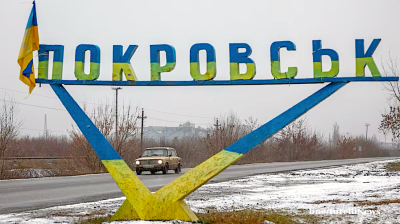Ukraine’s economy was not healthy going into this crisis, but now it is facing the biggest shock since 2015, when the economy crashed following the Euromaidan protests and GDP fell 17% in the first quarter. The government needs money, and lots of it if it is going to cushion the blow.
It seems that the first hurdle has been cleared and the complete disaster of a default on its international debt obligations and deep devaluation that would have inevitably have followed if a deal with the International Monetary Fund (IMF) had failed.
As bne IntelliNews reported, a default on its debt would have been a catastrophe for Ukraine’s economy and condemned it to years of slow growth and miserable standards of living for its population, as well as a barren investment climate. As it stands, even with a new IMF deal the economy is likely to contract this year by 3.9%, according to the latest forecast by the Economics Ministry. And it could still contract by 9% this year, even with an IMF deal in place, if the lockdown is extended by several months, according to Tomas Fiala, the CEO of Dragon Capital.
But after the Rada passed the draft bank law in a late night session on March 24 it looks likely that the IMF will sign off on a $5.5bn Extended Fund Facility (EFF) soon that opens the doors to another $4bn from the IMF’s new Rapid Coronavirus Financing (RFI) facility, a $40bn fund set up to help low-income countries like Ukraine cope with the stop-shock, as well as significant other loans from other international financial institutions (IFIs) and international partners.
However, the IMF deal is not in the bag yet. It still has two more readings to get through that are expected to be held in the next week. It has been dubbed the “anti-Kolomoisky” law on account of the oligarch Ihor Kolomoisky, who is one of the most powerful business figures in the country and has been actively trying to sabotage the law that would prevent him from regaining control over his Privatbank, which was nationalised in 2016 after he and his partners looted the bank of some $5.5bn using fake loans and shell company scams. bne IntelliNews exposed the fraud with a cover story “Privat investigations” in November 2016, and the subsequent scandal forced the National Bank of Ukraine (NBU) to take the bank over two months later.
IFIs to the rescue
Ukrainian President Volodymyr Zelenskiy gets it. He appealed to law makers to pass the bills and it appears that he has turned on his former mentor and backer Kolomoisky for the sake of the country.
The prospect of IMF funding radically improves Ukraine’s position. “If we get this funding, we can calmly go through the crisis that has swept the whole world today,” Yakiv Smoliy, Governor of the NBU, predicted on April 1 during an online conference call with the European Business Association.
The first cash to arrive will be from the IMF under the RFI facility. Zelenskiy said last weekend following a call with the IMF chairperson that the IMF would immediately pay $2bn into the state budget from the RFI with no strings attached to deal with urgent debt payments and social support programmes. (Normally IMF money is paid into the accounts of the NBU.) Ukraine has a $1.9bn debt payment due in May and a total of $4.1bn to pay this year, mostly to the IFIs.
Also on April 1 the government announced Zelenskiy has done a deal with German Chancellor Angela Merkel and agreed on a €150mn loan from Germany to help Ukraine fight coronavirus (COVID-19). These funds would be in addition to two other new sources of money from Europe to fight the epidemic: €40mn from the European Investment Bank (EIB) and €80mn from the European Commission.
But the main help will come from the other IFIs. In addition to the $9.5bn total from the IMF is an additional $1bn from the World Bank, a €500mn macroeconomic stabilisation loan from the EU, which is an ongoing facility separate from the aforementioned virus-related emergency loans, and bilateral aid from Canada and Japan, according to Danylo Hetmantsev, head of the Rada finance committee. Separately, Reuters reports Ukraine is in talks with the World Bank for another $150mn loan for social payments related to the coronavirus curbs.
The markets reopen
All this money – roughly $21bn in commitments – will easily see Ukraine through this year. In addition, with the IMF at its back Ukraine intends to tap the international capital markets.
In the run-up to the anti-Kolomoisky law vote investors began to get very nervous and the spreads on Ukraine’s 2028 Eurobonds blew out by 150bp to over 11%, effectively locking Ukraine out of the international debt markets; the cost of borrowing simply became punishingly high.
March has been a wild rollercoaster ride in the bond markets because as soon as the bank law was approved (and in the IMF-approved version, not one of several other pro-Kolomoisky versions submitted by his allies in the Rada) spreads on Ukraine’s sovereign bonds contracted again, down by 1.2% in a day and yields back under 10%.
As a result, the yield of securities maturing in 2023-2025 decreased to 9.8-9.9% per annum as of March 31, with maturity in 2026-2027 it decreased to 9.2-9.3% per annum, and long-term securities with maturity in 2032 decreased to 8.5%.
The yield on short-term securities was higher, with bonds due in September 2020 at 11.9%, and those that matured in 2021-2022 at 10-10.4% per annum. But happily the NBU had been using the bonanza of appetite for its paper last year to progressively push the maturities out to the longer end of the curve as well as drive yields down so Ukraine is not overly exposed to short-term debt. As a result it has a heavy, but manageable, repayment schedule over the next three years.
In addition, Ukraine’s warrants rose by 11.6% on March 31 after the vote, after falling heavily and giving up six months worth of gains. Their current value is 74.8% of the face value, off the 90%-plus they were in February, but well above their levels last summer. Some analysts such as Tim Ash, senior sovereign strategist at BlueBay Asset Management, have called on Ukraine to take advantage of the crisis and buy this debt out while it is still affordable.
These 2015 warrants threatened to cost Ukraine billions of dollars further down the road, as they offered their investors extremely generous terms when they were agreed in the depths of the last crisis five years ago. “A buy-back would have cost $3.7bn one month ago. Now it’s down to $2.4bn,” Ash said in a note to clients.
The reopening of the international debt markets to Ukraine is timely. To ease the social impact of the coronavirus quarantine, the government plans to nearly double its borrowings this year to $23bn. In a statement to the Rada, the government proposed doubling foreign borrowing to $9.4bn.
Ramping up a rescue package
Ukraine is officially in a state of emergency and closed its land borders on March 25. The major cities are not on lockdown, but schools, universities, public places and public transport have all been closed. While the number of cases remains small – there were 669 officially confirmed cases as of April 2 – and largely concentrated in the capital of Kyiv, clearly the virus is now in its exponential growth phase and things can only get a lot worse.
Bizarrely the government chose to sack the Health Minister, Ilya Yemets, after only 26 days on the job, who was replaced with Maksym Stepanov, the former head of the Odesa's Regional State Administration and who trained as a doctor.
Various schemes have been proposed, including a public works programme that will build roads and other essential infrastructure that will largely be paid for out of the budget. Ukraine was already intending to run a 2% of GDP deficit in 2020, or UAH90bn ($3.3bn) to pay for the huge amount of investment the economy needs, but now the plan is to increase the deficit five-fold this year, to 10% of GDP, predicts Maria Repko, Deputy Director of Kyiv’s centre for Economic Strategy. Spending on medical care will double, while revenues will drop along with the GDP. Last autumn Kyiv committed to an IMF approved budget with a 2% cap on the deficit, but that restriction is expected to be waived.
The trick will be how to finance the hole in the budget. Zelenskiy was already doing badly with tax collection and running behind the plan, and with tax revenues bound to fall sharply now and the appetite for Ukraine’s domestic debt likely to shrink, the IFI aid is likely to become the only source of sufficient funds to finance this deficit.
Another important source of funds is likely to shrink. Ukraine has been running a sizable trade deficit with both Russia and the EU over the last few years, but the shortfall has been easily covered with the $12bn-$14bn in remittances Ukrainians working overseas have sent home each year.
With the advent of the crisis in March, Zelenskiy invited all these Ukrainians to return home – an estimated 7mn-8mn Ukrainians travelled to Poland, Czech, Hungary and Russia, amongst other countries in recent years, to find work – and an estimated 500,000 have already returned. But that means remittances are expected to fall by a quarter this year, or by about $3bn.
The combined effect of returning expats and the economic slowdown will inevitably drive up unemployment, which was forecast to be 8.1% this year before the crisis broke but is now expected to reach 10%, according to the Economics Ministry. In all some 2mn Ukrainians could find themselves out of work this year. According to reports, after only two weeks of crisis, already between 500,000 and 700,000 people have already lost their jobs.
Gennadiy Chizhikov, president of the Chamber of Commerce and Industry of Ukraine, warned that with 650,000 small and medium businesses employing up to 4mn people, the figure of newly unemployed could jump 5-fold in the next month, as most SMEs only have resources to survive until mid-April. A survey in March found that only 46% of those polled were going to receive their full salary in March, another 45% have enough money to last only one month and 34% will run out of money in two months. Clearly the standard of living is going to be hit hard, let alone the sectors dependent on the population’s income.
The one place where there is some positive news for the government is the terms of trade should improve. The fall in income as well as the fall in real incomes as inflation rises and the hryvnia continues to devalue will lead to a fall in imports, which have been running ahead of exports. The fall in commodity prices will also reduce the export revenues, but the fall in the price for food products is anticipated to fall by less and offset the decline. Taken together, Concorde Capital predicts that Ukraine could see its circa $4bn trade deficit turn into a surplus as a result of all these changes that could provide the government with some badly needed cash.



